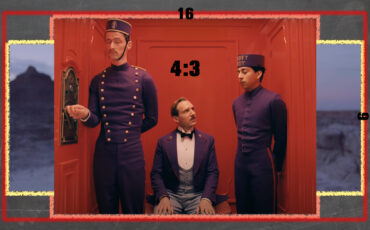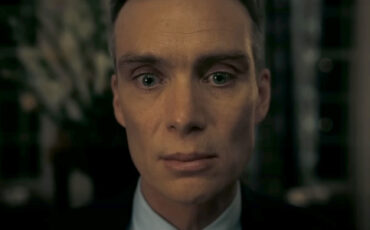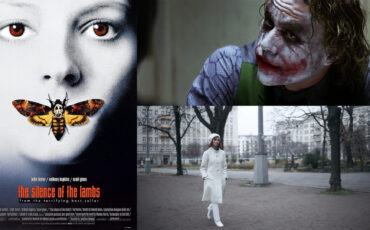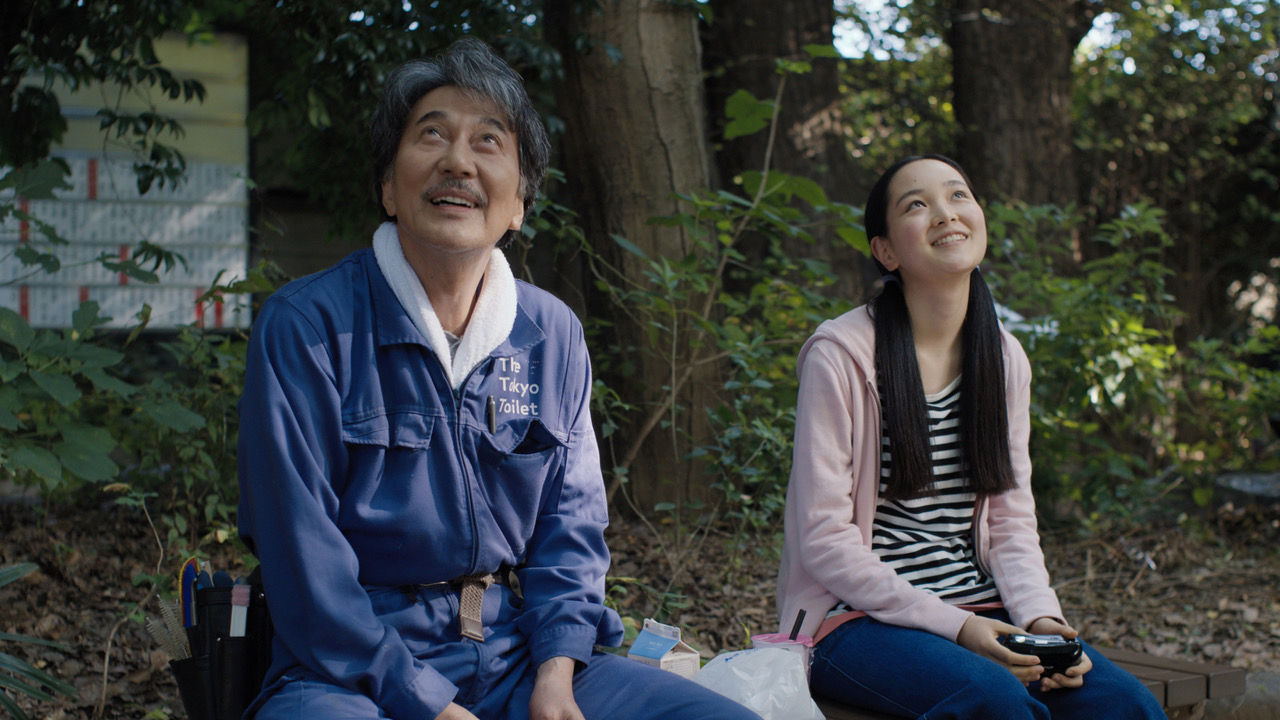
“Live here and now! Enjoy the moment! Find beauty in the mundane!” – For some, these are just “mindful” thoughts with an unclear origin trending in social media. For Hirayama, they are postulates he builds his life on. A new, peaceful, and slightly bittersweet drama, “Perfect Days” by Wim Wenders, depicts everyday scenes in Tokyo, following a toilet cleaner who has found bliss in simple things. It’s so meditative that some may call this film too slow-paced and boring. However, if its central message resonates with you in any way, read along! Let‘s dive into the transcendental routine and explore the poetry of the quiet frames in “Perfect Days”!
The 96th Academy Awards will be held on Sunday, the 10th of March. Thus, our short Oscars sprint is also coming to an end. To conclude it with something special, we decided to take a look at a smaller category – Best International Feature – and break down the cinematography of a quiet drama from Japan. “Perfect Days” has strong competition this year, sharing the nomination with, for example, Jonathan Glazer’s powerful “The Zone of Interest”. It doesn’t matter though whether Wim Wender’s picture has a chance of winning or not. After all, it already won its place in our hearts. Interestingly, it’s done so more with a rather simplistic approach than with fancy effects or complicated tools.
The quiet frames of Perfect Days: how they started
This story begins with “The Tokyo Toilet Project”. Contemporary designers and architects from all around the world created 17 public bathrooms in Japan’s capital for the Olympics (which were postponed due to COVID-19). They treated them as installations, pieces of art, yet of course, the toilets themselves were also open for ordinary use. Relieve yourself and enjoy the artwork, so to speak.
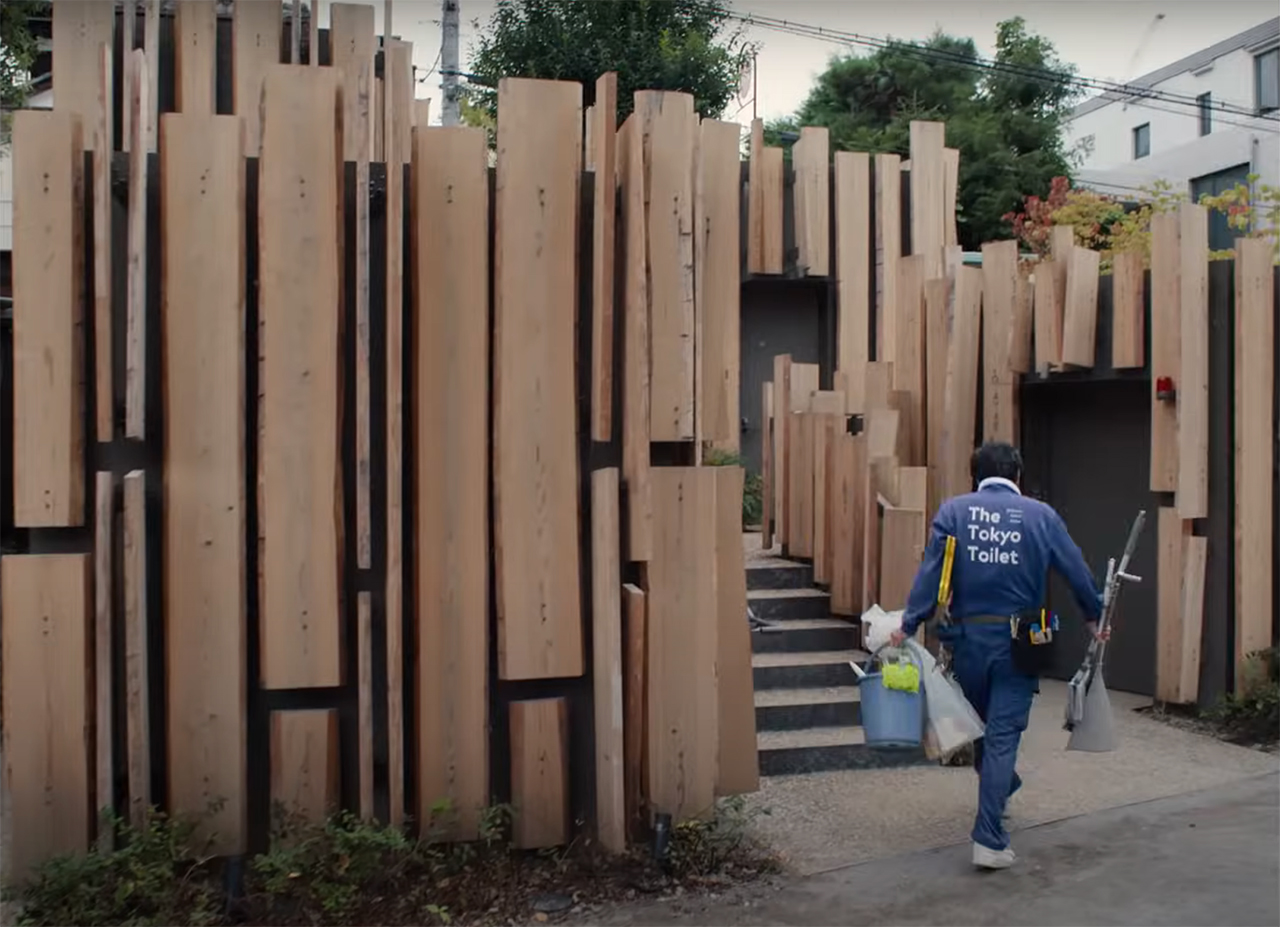
Film stills from “Perfect Days” by Wim Wenders, 2023 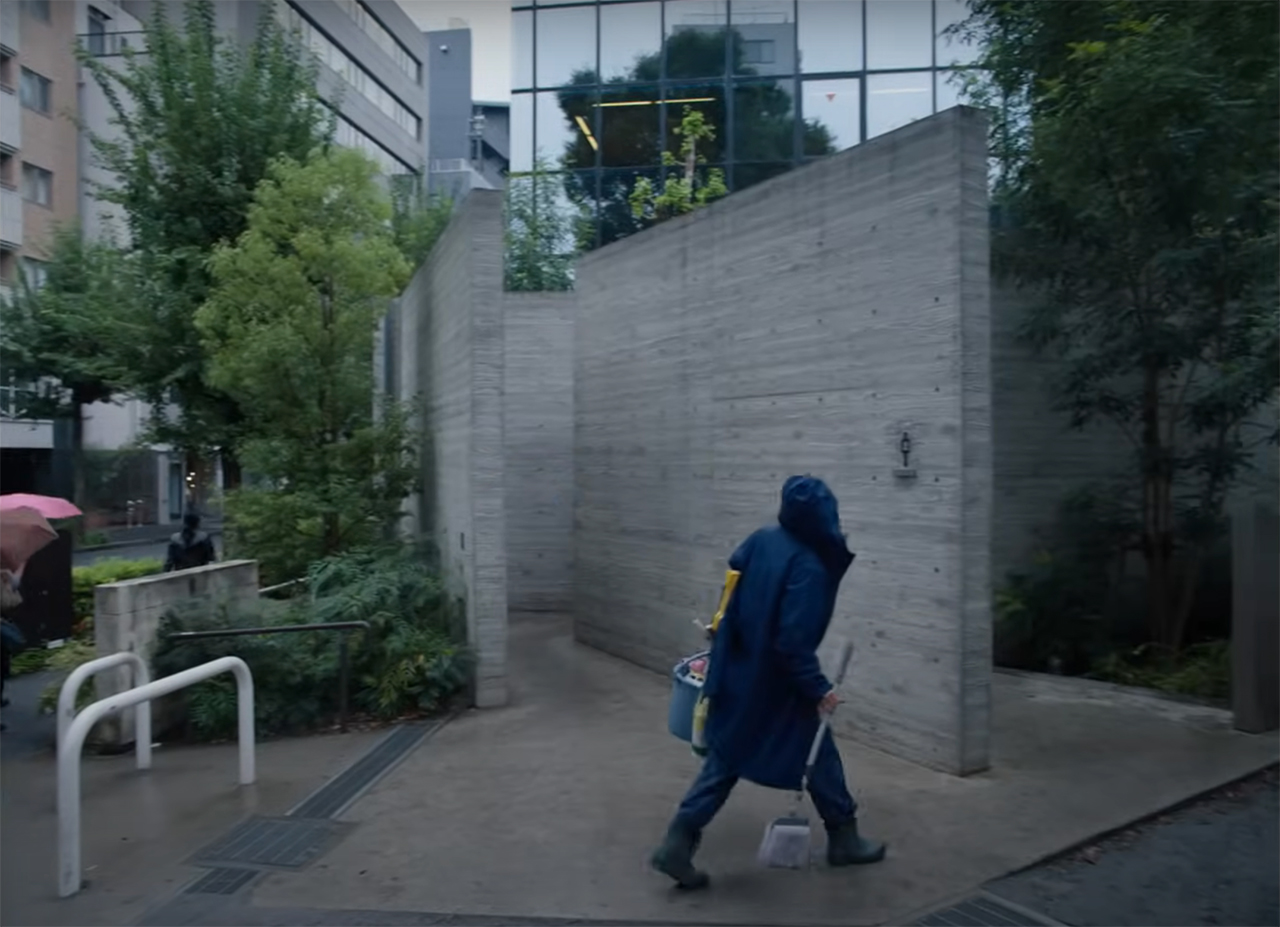
At first, the production invited Wim Wenders to make a series of short documentary films on the unique facilities to promote the project. Yet when the German director (known for his love of Japan) saw the toilets, he immediately came up with an idea for a fiction feature. Luckily, everyone agreed. So, together with his co-writer Takuma Takasaki, Wim went back to Berlin and they wrote a script in 3 weeks. The film itself was shot in Tokyo over 16 days.
While it may be the least effort put into an Oscar-nominated feature, this approach seems to align better with its central message than any other would.
The Art of Visual Storytelling
Documentary approach
“Perfect Days” follows Hirayama, a toilet cleaner in Tokyo, who not only loves his job but also generally enjoys a minimalistic, simple life, based on an ever-repeating routine. This film doesn’t have a rigid, classic plot; it’s more or less based on short stories unfolding around Hirayama and small moments he notices and enjoys – eating lunch on a bench, listening to a Lou Reed cassette in the car, exchanging gazes with a strange woman in the park, or getting his dinner at the same underground sports bar. Nothing thrilling is happening, really, only ordinary events anyone can relate to. If you’ve watched “Paterson” by Jim Jarmusch, then you’ll recognize the vibe.
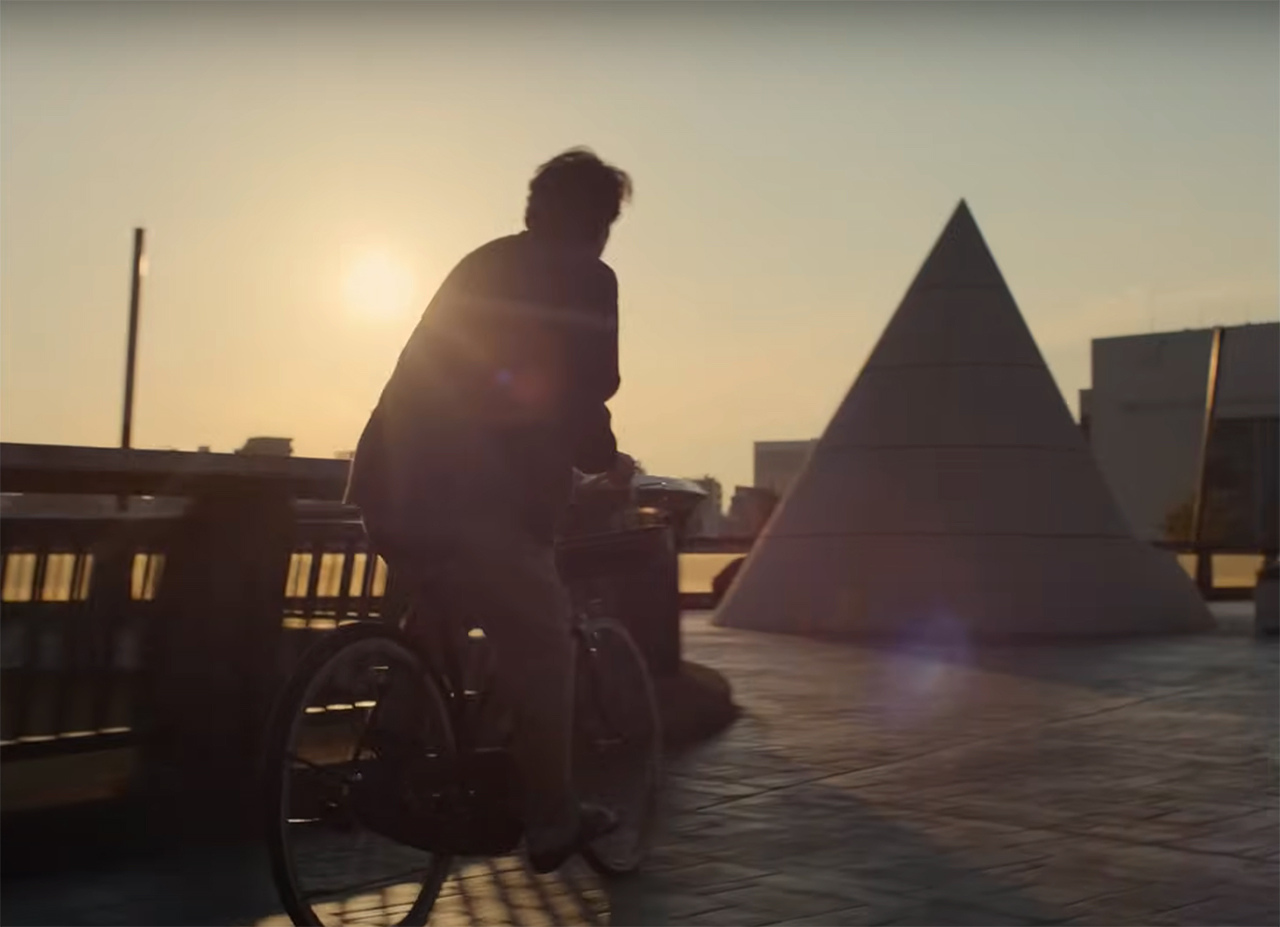
Film stills from “Perfect Days” by Wim Wenders, 2023 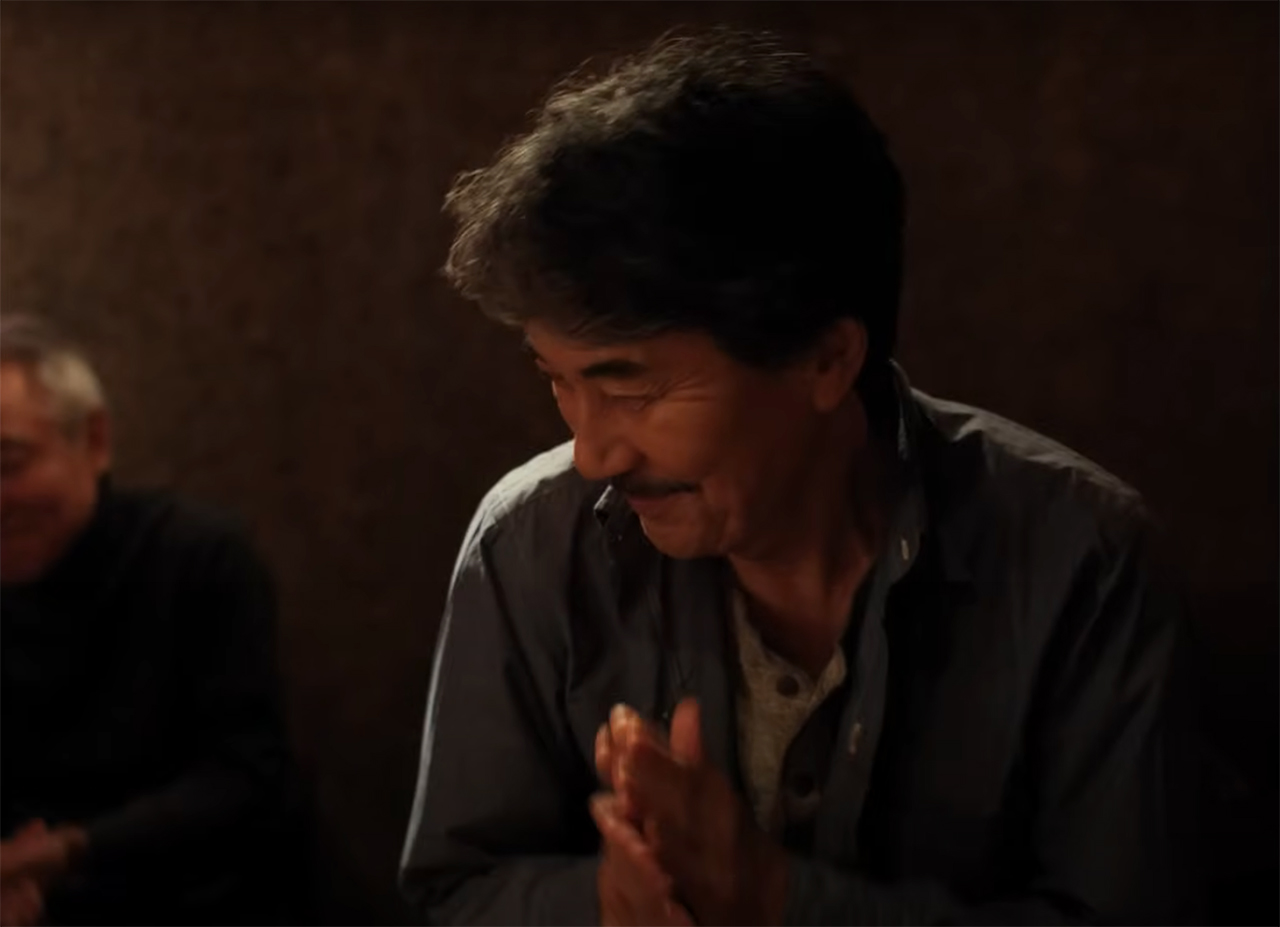
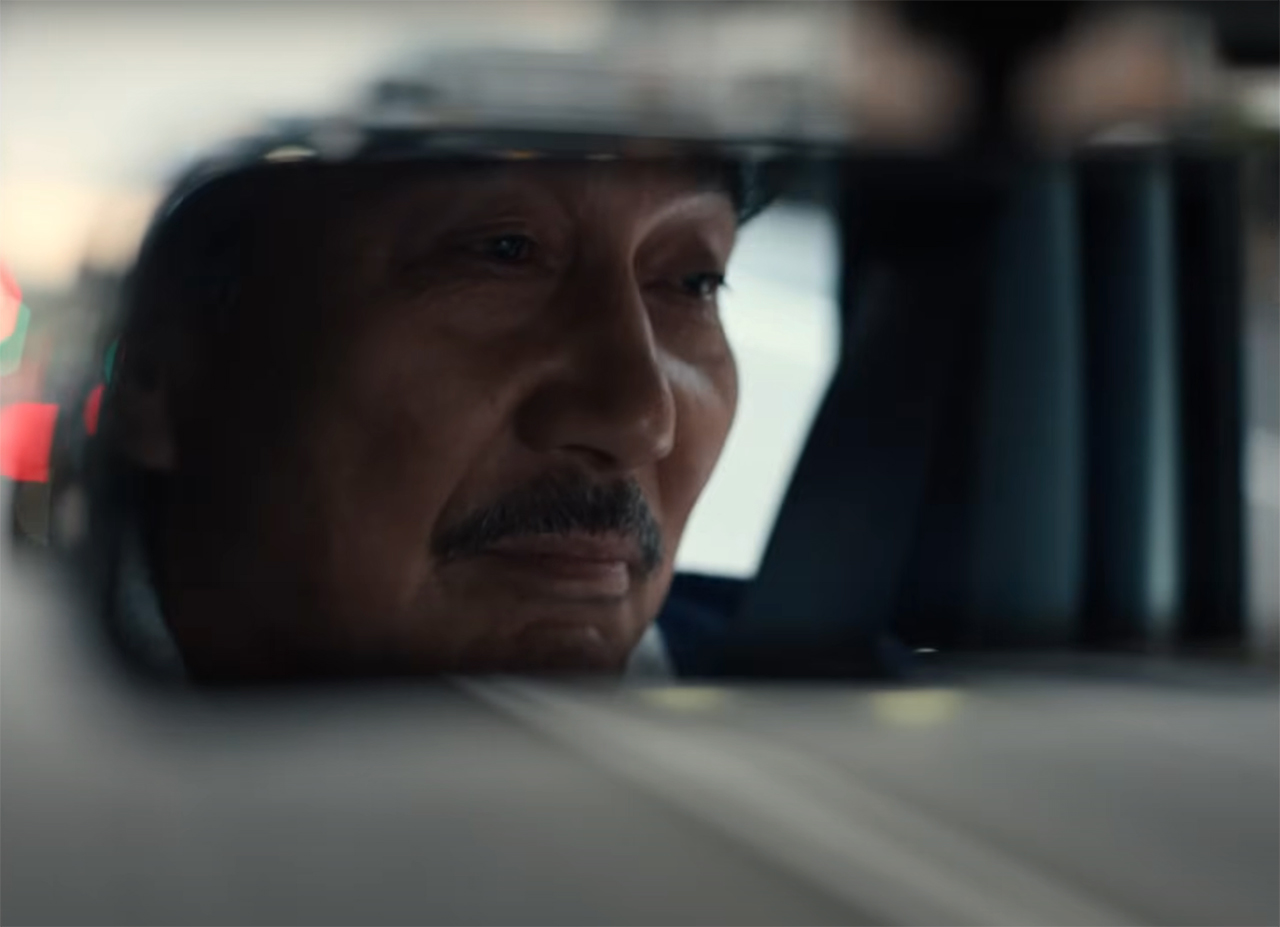
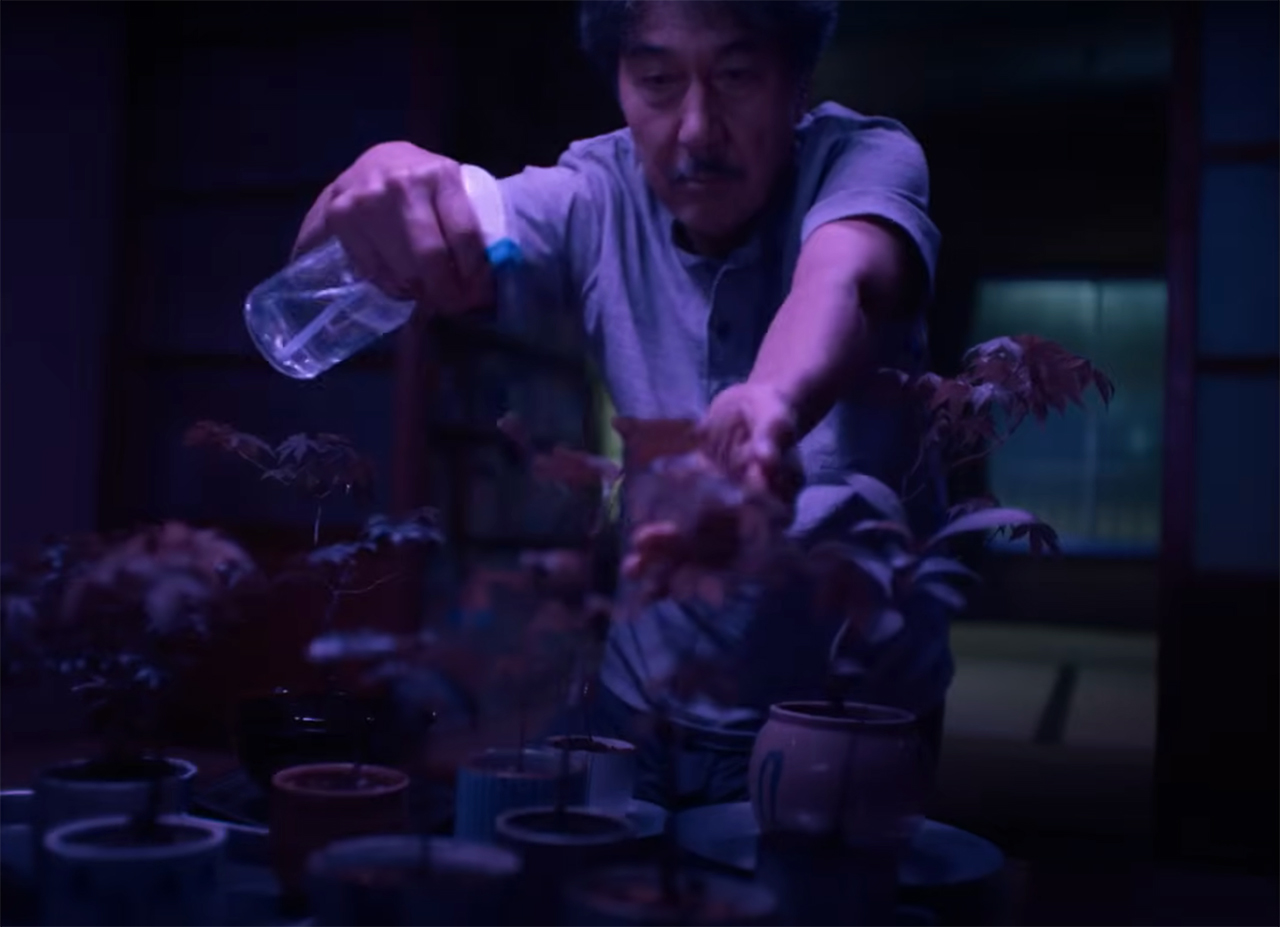
To make it feel even more authentic, the documentary approach felt like the right decision. “Perfect Days” plays out in an intimate 1.33:1 aspect ratio, has mostly handheld camera work, and includes a lot of exterior scenes using available light. There is very little dialogue as Hirayama doesn’t speak much, preferring to keep his thoughts to himself. Accordingly, we don’t know a lot about his background – only glimpses of his old life. Wim Wenders explains that this was his intentional choice. The director wanted to keep the protagonist’s history secret (sharing it only with the main actor – Kōji Yakusho) because this story is not about any possible drama he had in the past. It’s about here and now and the universal humanity of the character.
How to tell routine in quiet frames
As Hirayama’s routine became the central focus of the movie’s structure, filmmakers made sure to show it from his perspective. Wim Wenders believes people often put a very negative connotation on the word “routine”. Generally, it’s considered something boring that you do automatically, without really being ‘present’. To him (and to Hirayama), routine means beautiful processes you love doing and that give your life shape. The main character is attentive to every detail and each change surrounding him. This is why his day (and the film itself) starts not with an alarm clock, but with the subtle sounds of someone sweeping the street. Cut to a close-up of Hirayama’s ear and we dive smoothly into his world, carefully put together from tiny pieces.
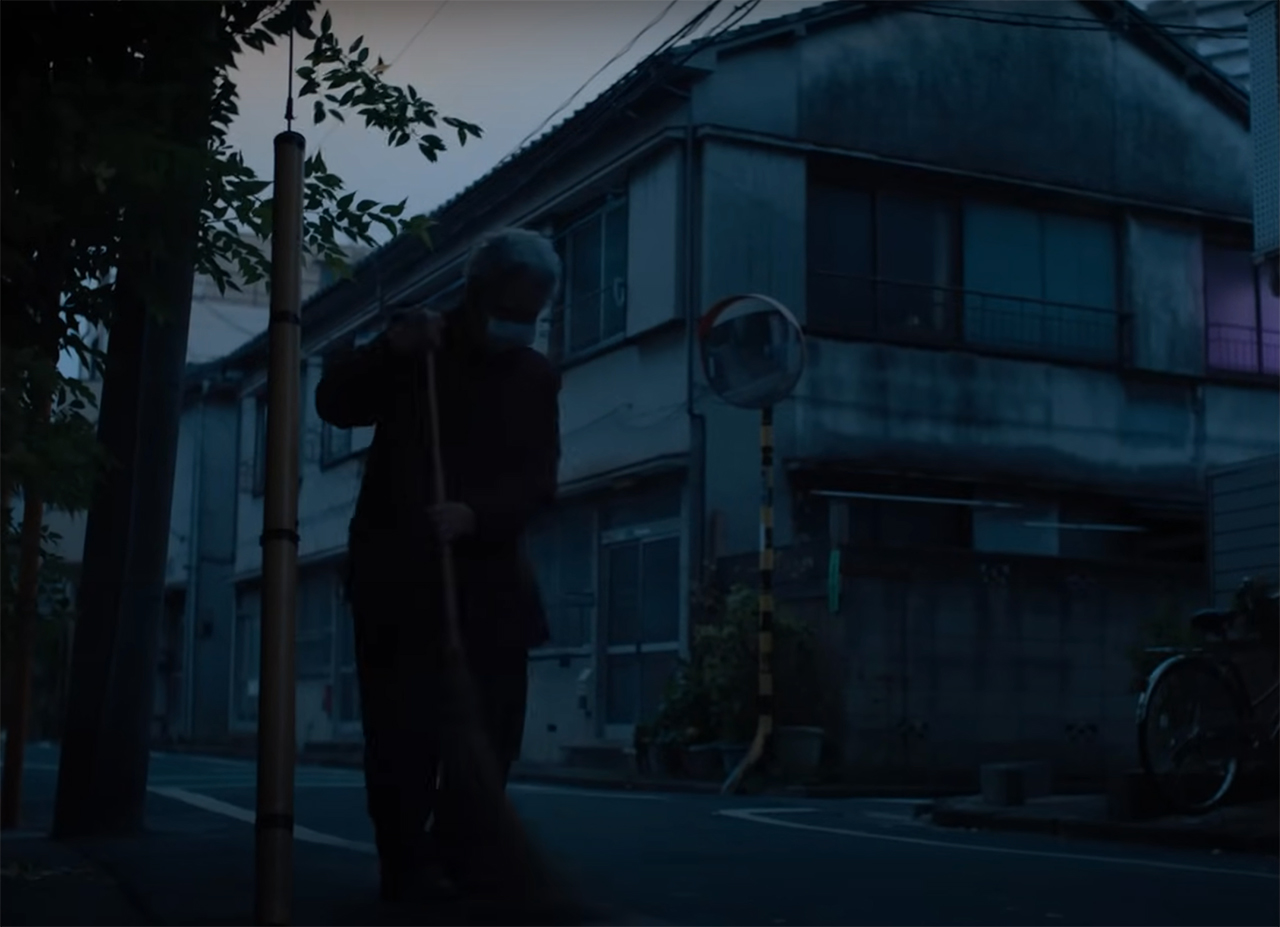
The idea that routine can be endearing and engaging also manifests in the way different scenes in “Perfect Days” are framed. Yes, we often see the same activities from Hirayama’s days: driving to work, cleaning the toilets, and eating at a specific location. However, if you look closely, you find that we always see things from a slightly different angle whenever the story repeats – meaning there might be a change in surroundings, but also usually from a different camera viewpoint. An interesting and seamless way to slightly shift a perspective, as Hiroyama does, looking at every single day with clear and loving eyes every time.
Komorebi as a visual metaphor
Another metaphor Wim Wenders uses to support his message is the Japanese concept of “komorebi”. This term describes the dancing shadow patterns created by sunlight shining through rustling leaves and swaying branches. Every day, during his simple lunch in the park, Hirayama takes komorebi pictures of a particular tree with his old Olympus film camera. On some weekends, he gets the film developed and chooses the best snapshots of patterns for his extensive collection. Black-and-white pictures might seem the same to an inattentive viewer. Yet, of course, they are all unique. The whole concept behind komorebi is that it can exist only for a moment. So, this original passionate hobby is probably the most suitable visual symbol for the main character’s attitude about life.
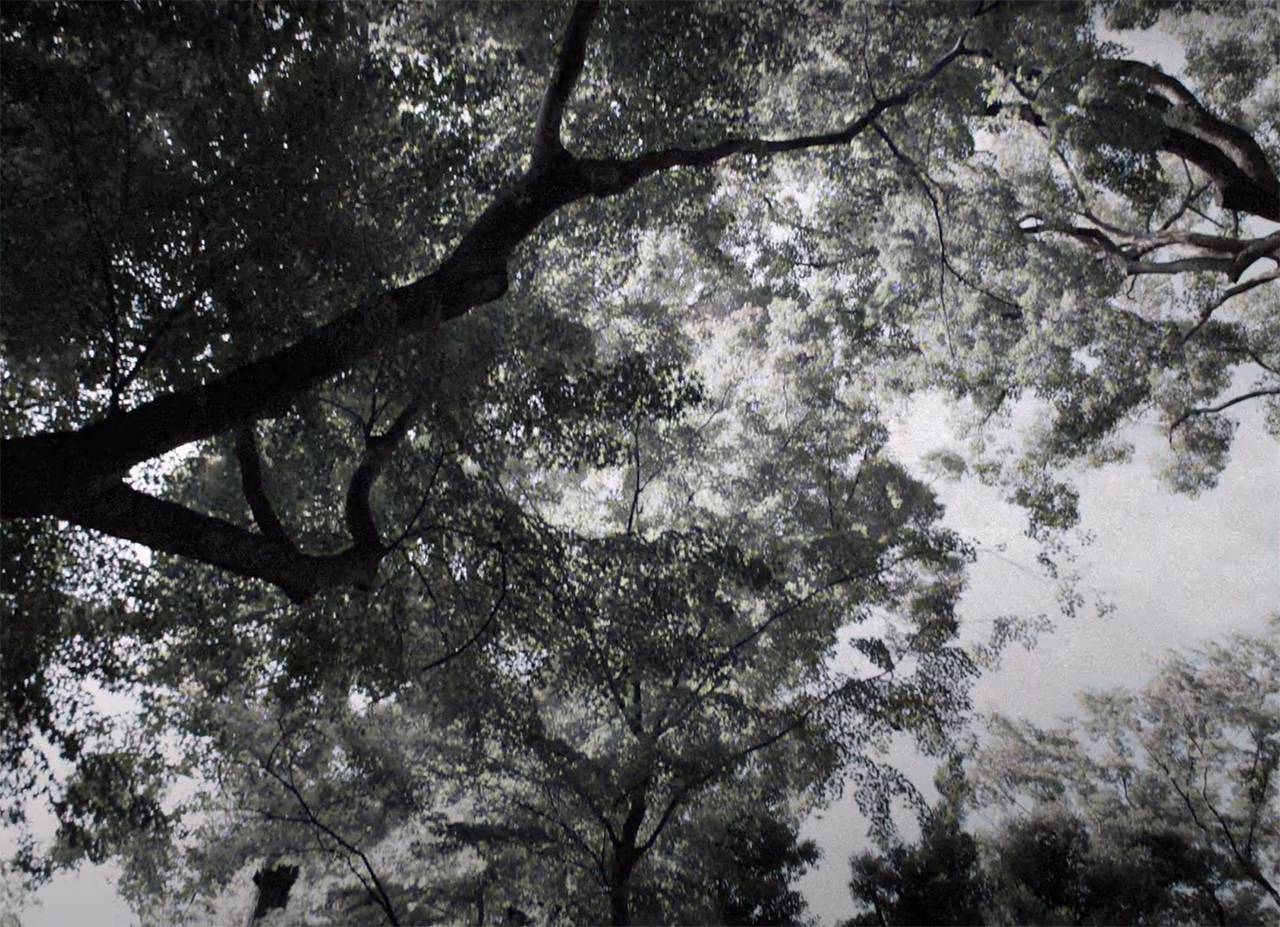
There is another visual element in “Perfect Days”, which breaks out of the documentary approach. At the end of every day, we see Hiryama’s dreams shown as abstract sequences. These consist of shots we’ve seen before, but they overlap each other in an impressionistic manner. To me personally, flickery images rhymed with komorebi photos are also reminiscent of unique patterns – where our life shines through.
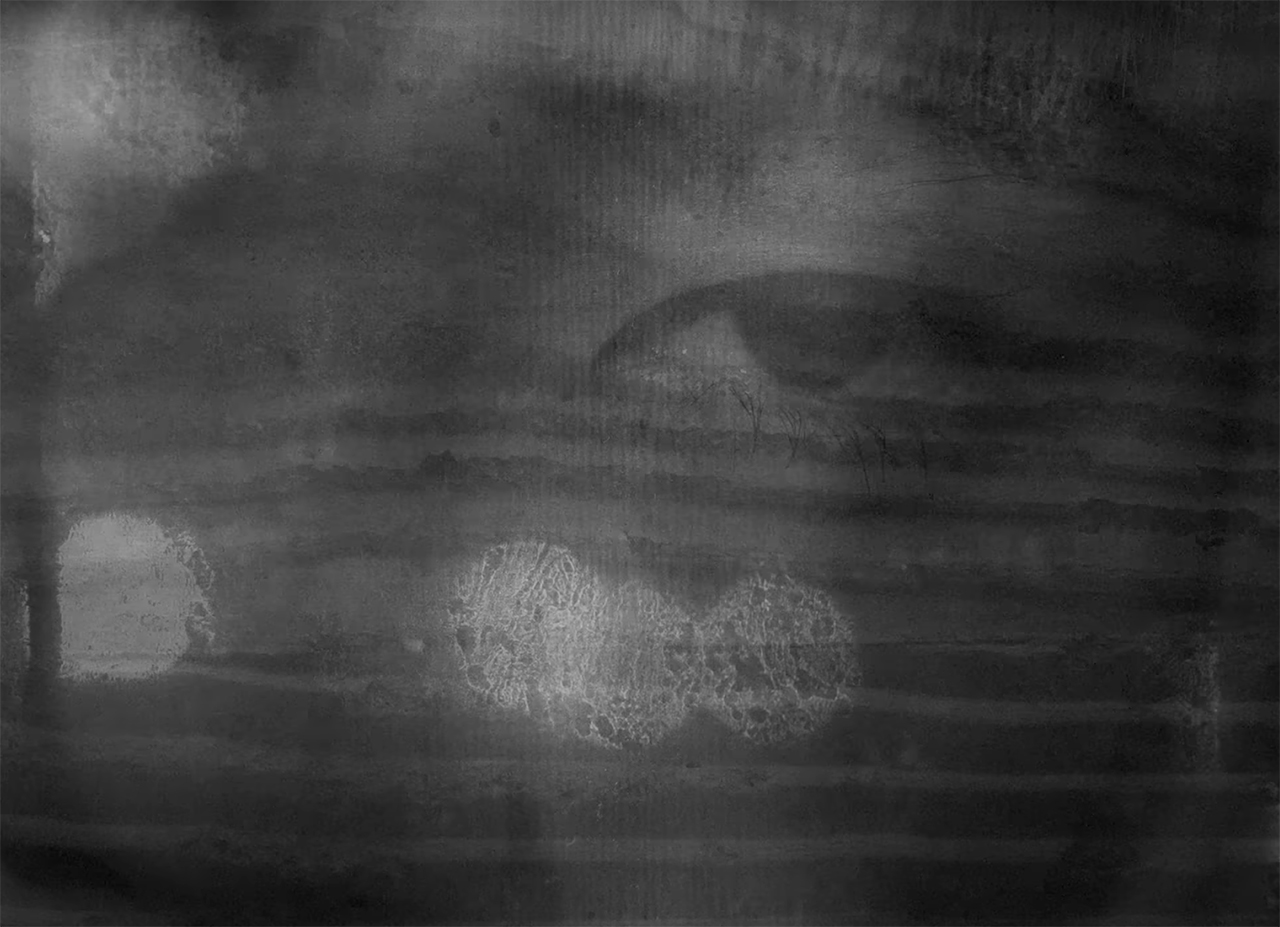
Music and frames of “Perfect Days” go hand in hand
As we learn more about Hirayama, we explore his simple hobbies: growing trees, reading books (quite unexpected ones for a minimalist janitor, such as Faulkner), and listening to music in his van to and from work. His cassette tape collection could make a decent playlist full of classics featuring Van Morrison, the Velvet Underground, and the Kinks, to name a few. Music is indeed an important storytelling element in “Perfect Days”.
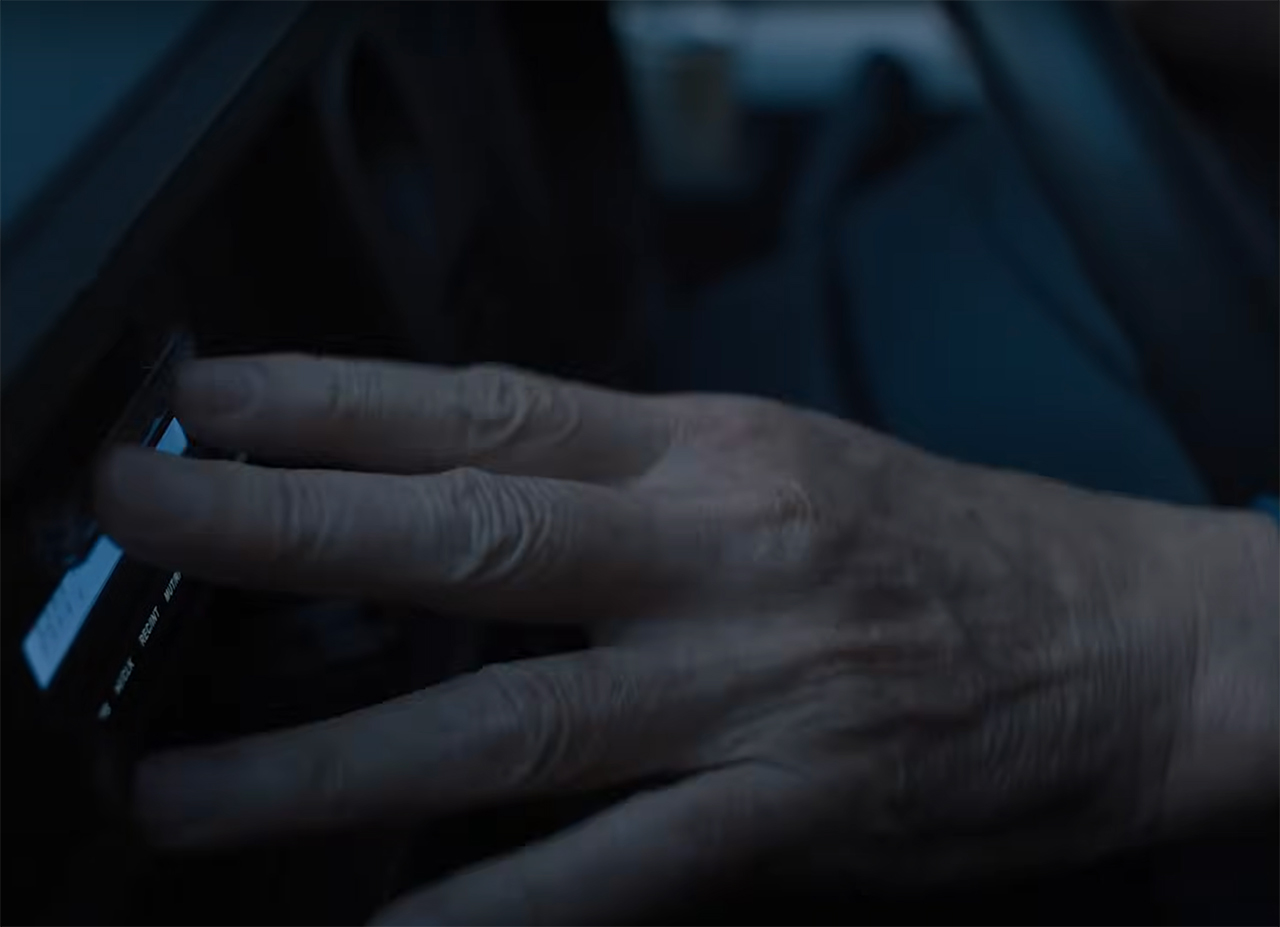
First of all, the passion of the protagonist helps film creators pose the question of materialism versus simplicity. At one point in the story, his cassettes are getting appraised. To the astonishment of Hirayama’s colleague Takashi, they are extremely valuable. Yet, Hirayama doesn’t want to sell them as he obviously enjoys listening to his music tapes more than money.
On the other hand, every melody we hear in “Perfect Days” somehow supports the story. As an example, the final piece, “Feeling Good” by Nina Simone, is about looking forward to new beginnings with optimism. As it plays, we see a frontal close-up of Hirayama lost between different emotions: sad, happy, melancholic, and grateful at the same time. Well, life can be both painful and beautiful, but finding the silver lining in each of the moments is something we could strive for.
Philosophy of living
“Next time is next time,” says Hirayama to his niece, Niko, who has run away from home to visit her uncle – “Now is now.” Unlike films with the usual hero’s journey, the protagonist of “Perfect Days” doesn’t change much throughout the story. We see him at peace from the very first frame, finding satisfaction in a simple, ego-free life. Yet, it would be a mistake to say he is always happy. At different moments Hirayama experiences various emotions: Stressed out during a night shift when his colleague unexpectedly quits; miserable to see a woman he likes hug another man; in tears after meeting his sister and having to confront the past.
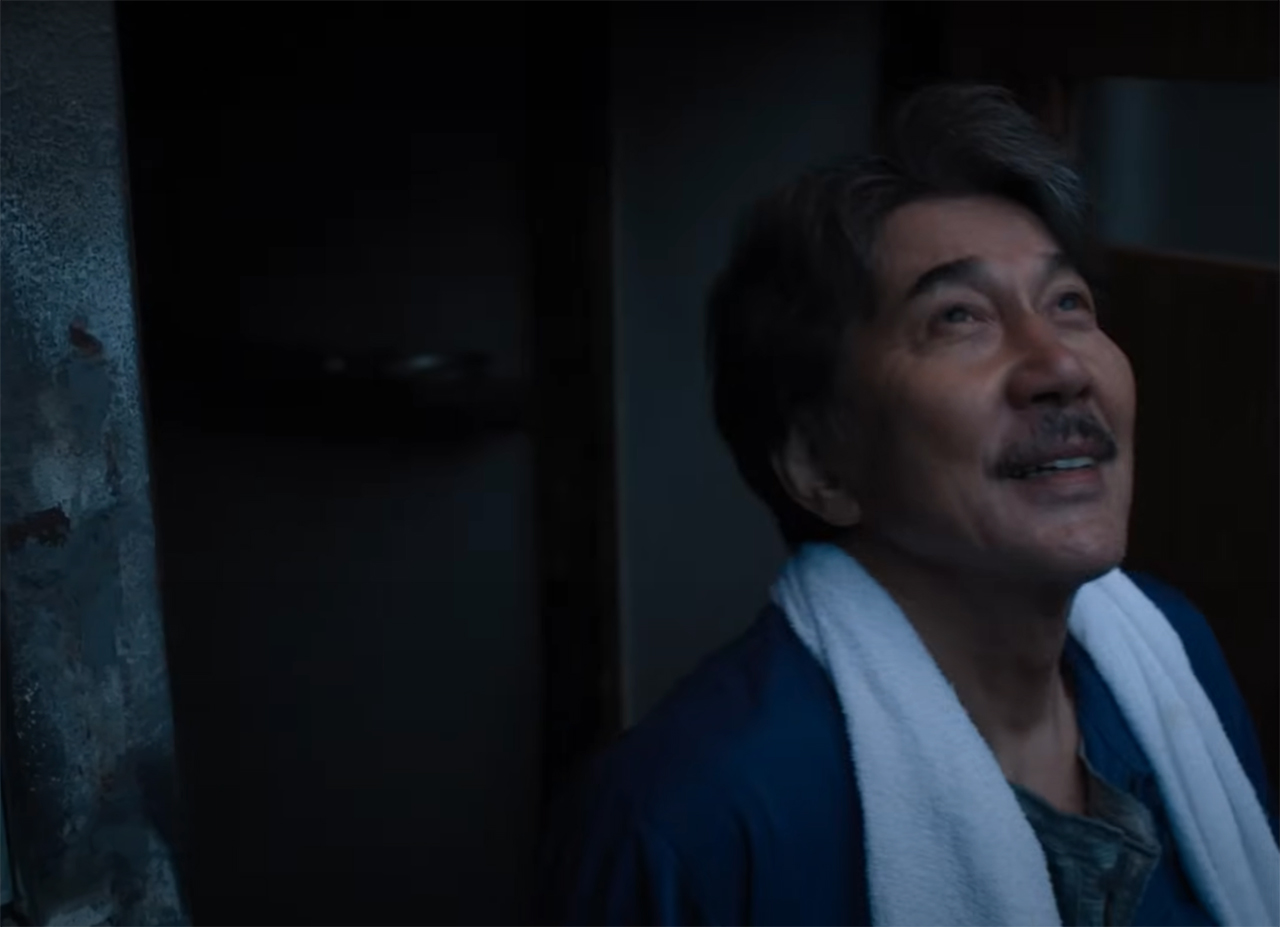
Film stills from “Perfect Days” by Wim Wenders, 2023 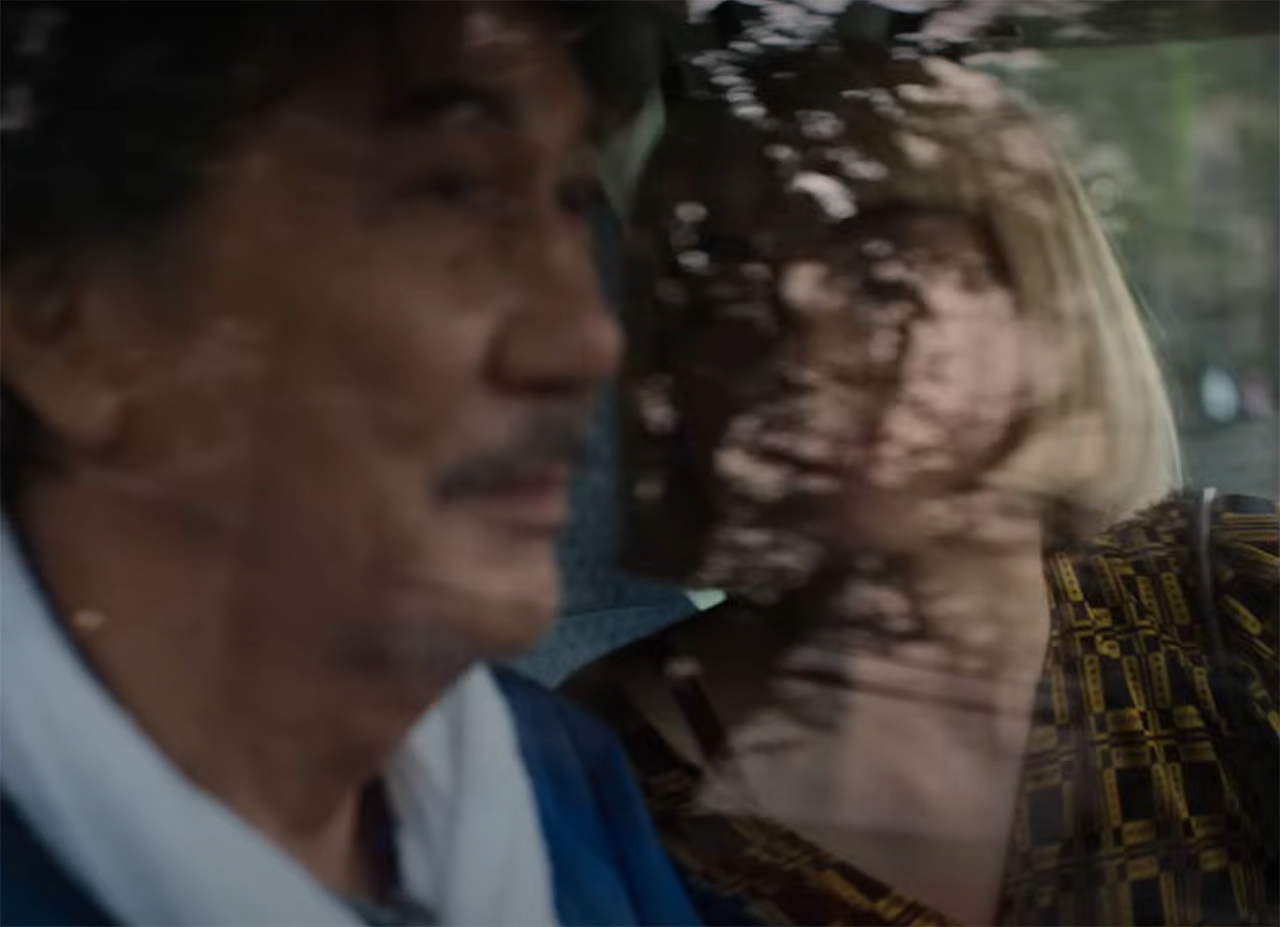
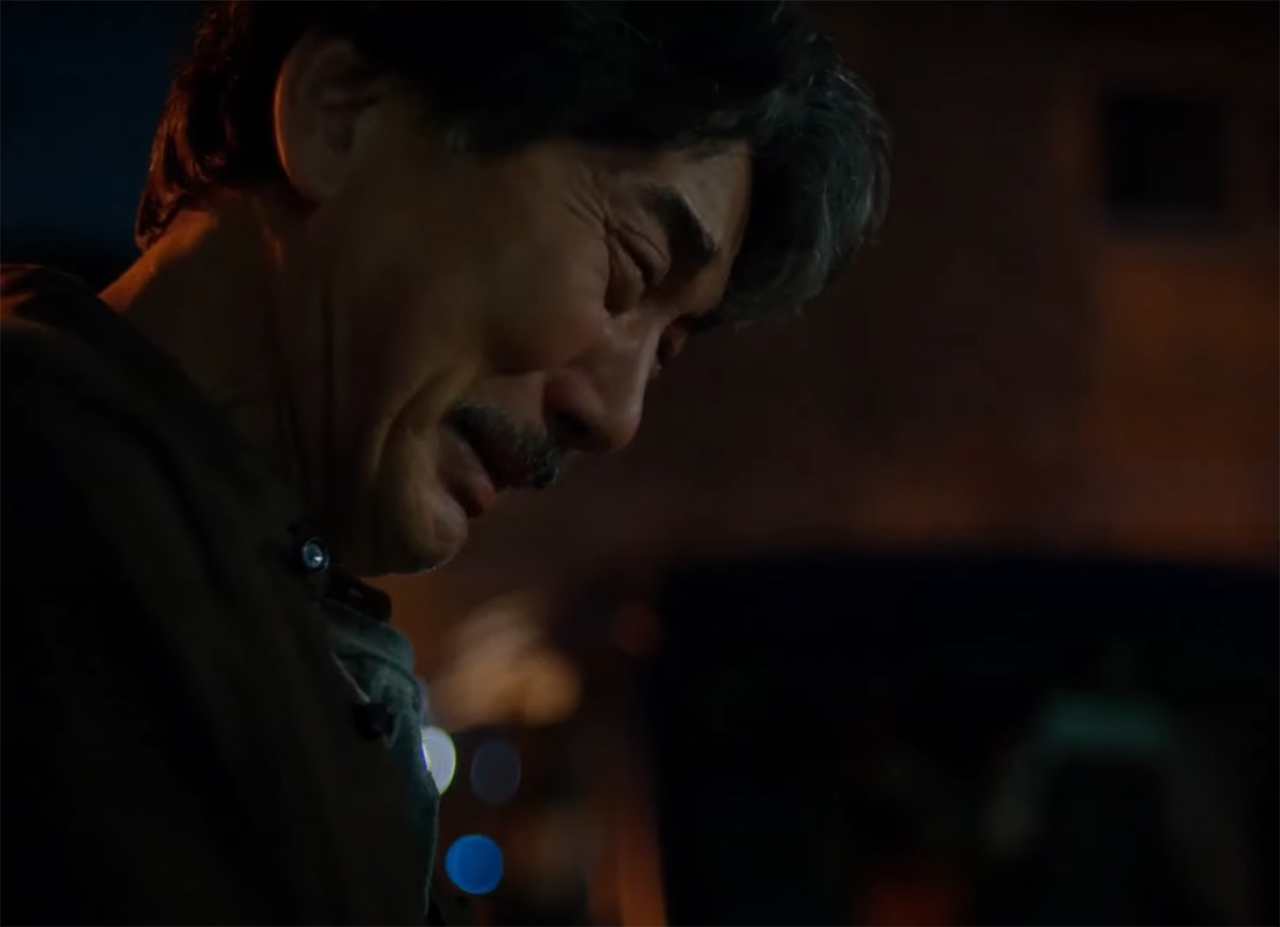
However, these emotions don’t dictate how he lives and what choices he makes. Following the “now is now” philosophy, Hirayama finds his own happiness and bliss, even when life is an imperfect beast.
Personally, I felt a deep gratitude to the Universe and also a peaceful state of mind after watching this film. What about you? Did you like the quiet frames of “Perfect Days”? How did you find the pacing and the documentary approach? Looking forward to your answers in the comments below.
Full disclosure: MZed is owned by CineD
Join MZed Pro now and start watching today!
Feature image source: a film still from “Perfect Days” by Wim Wenders, 2023.






